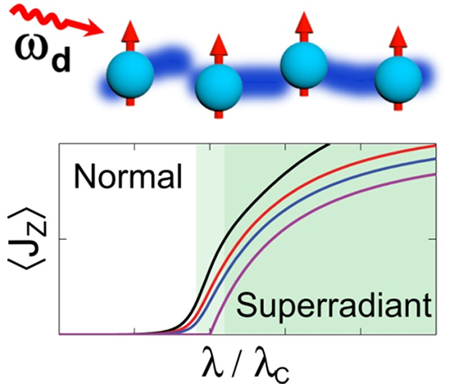In collaboration with Professor Haohua Wang’s group in Zhejiang University and Professor Jason Twamley in ARC Centre of Excellence for Engineered Quantum Systems (www.equs.org) in Macquarie University, Australia, Professor Mang Feng’s group for Bound-System Quantum Information Processing at Wuhan Institute of Physics and Mathematics (WIPM), Chinese Academy of Sciences has just published their latest research result exploring QPT in Nature Communications.
(http://www.nature.com/ncomms/2015/150514/ncomms8111/full/ncomms8111.html)
Quantum phase transition (QPT) is a second-order phase transition in many-body systems, behaving as a discontinuous change in a property of the ground state or the structure of the excited states. Since it is different from classical phase transition, e.g., from ice to water, but resulted from competition between the many-body interaction and quantum fluctuation, QPT reflects general characteristic of the quantum system, irrelevant to interaction details. Exploring QPT is not only an important route towards understanding quantum many-body systems, but also a currently hot topic in quantum information science.
It has been generally believed that QPT can be observed only in strong interaction between light and matter, which is hard to be achieved with currently experimental technology. The article published in Nature Communications demonstrated successfully a QPT from a normal phase to a superradiant phase using a superconducting chip consisting of four phase qubits, which indicates the possibility of observing QPT in a weak light-matter coupling system. The researchers found that the parity symmetry in the original system breaks down once an external drive is applied and this leads to a reduction of the QPT critical point from a large value relevant to the characteristic frequencies in the system to an experimentally feasible value relevant to the characteristic detunings. As such, a non-equilibrium QPT is feasible to occur under the weak light-matter coupling. The results have not only experimentally verified a scheme proposed two years ago by some of the authors for non-equilibrium QPT [New Journal of Physics 15, 123032 (2013)], but also further discovered quantum collective behavior under decoherence. The experimental observation fits the theoretical prediction very well. This experimental research will deepen understanding of quantum collective behavior influenced by parity breaking, and pave a way towards further exploring quantum many-body correlation, quantum simulation and quantum precision measurement.
The research is supported by National Fundamental Science Research Programs “Engineering quantum states in coupled systems of trapped single-atoms (ions) and light” and “Preparation, characterization and control of multiple quantum coherence devices” as well as Australian Research Council Funding.

Fig. 1 Schematic of quantum phase transition performed experimentally using four-phase qubits driven by a microwave. The quantum phase transition occurs from a normal phase to a superradiant phase.